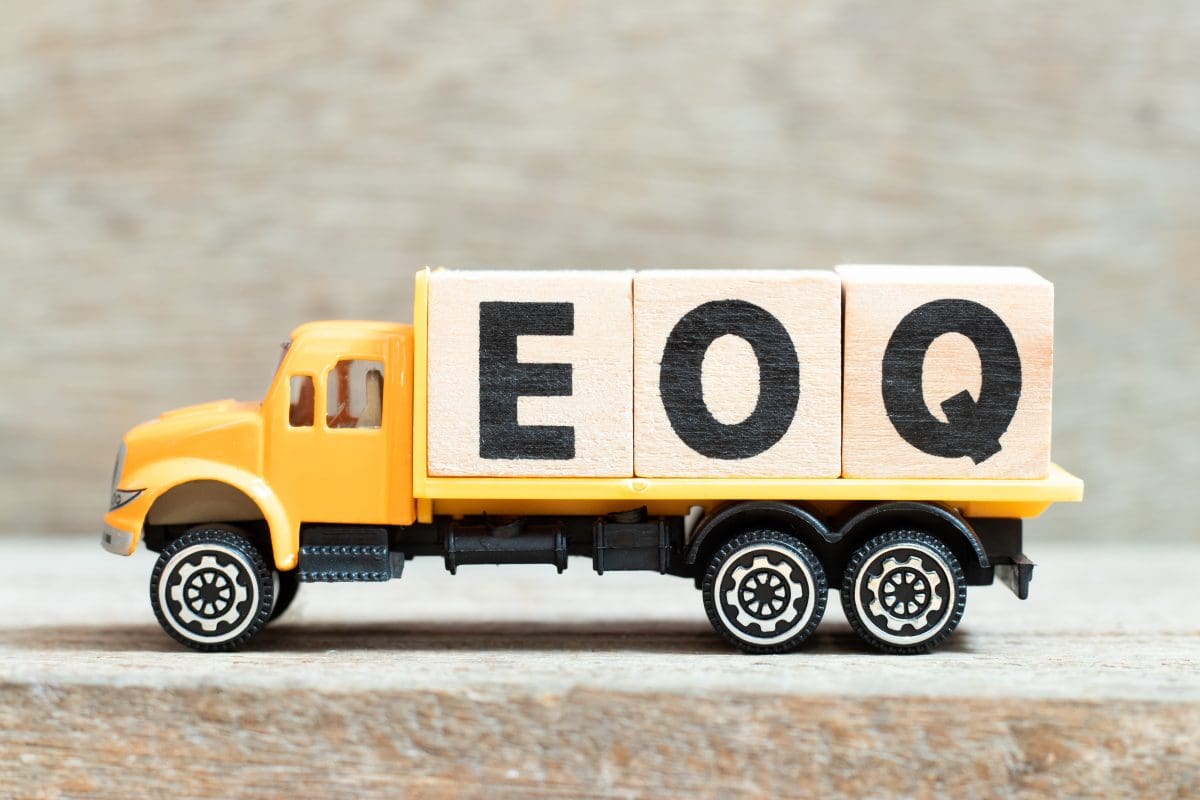
Having an efficient inventory system and an adequately managed inventory is vital for any company looking to maximize profits. The optimal approach to attaining that is by minimizing inventory ordering and storing costs. This is where finding the economic order quantity (EOQ) comes in handy.
But for a business to figure out the ideal inventory quantity to order and store, it must utilize some kind of financial metric – in this case, known as the economic order quantity or EOQ.
What is Economic Order Quantity?
EOQ, also called the optimum lot size, is a calculation used by businesses to determine the optimal order quantity to minimize overstock costs, stock outs, warehousing space, and logistics costs. In other words, it’s the ideal product quantity required to maintain cost-efficiency in a supply chain.
Factors Required to Calculate EOQ
The economic order quantity formula constitutes three variables: order costs, demand, and holding costs. Below is a look at each variable in detail.
Order Costs (S)
Sometimes known as ‘setup costs,’ order costs include packaging costs, handling and shipping costs, and other related transportation and clerical costs, e.g., invoice processing. Generally, however, more orders bring about high order costs.
Annual Demand (D)
How many products do you sell to fulfill annual demand? Suppose your inventory has been selling for less than one year, or you simply don’t know, consider employing forecasting tools. Alternatively, you may consult your historical order data and see how many units you sell annually on average.
Holding Costs (H)
Holding costs, also referred to as storage costs or carrying costs, are essentially the overall cost of holding each unit or item per year. It includes:
- Employee costs
- Miscellaneous costs
- Storage space costs
- Opportunity costs
EOQ Formula
The formula for calculating EOQ is as follows:
EOQ = Square root of: [(2SD) / H]
Where:
- S is the order costs per purchase order
- D is the demand in units (often annually)
- H is the holding costs per unit, per year
EOQ Example:
Suppose you have the following variables:
- Order costs of $500
- Demand rate of 10,000 units per year
- Holding cost of $0.75 per unit
Your optimal order quantity will be:
EOQ = Square root of: [(2 x 500 x 10,000) / 0.75]
= 3,652 units
How EOQ Works
Remember, EOQ takes into account the order placement costs, merchandise storage costs, and the timing of reordering. If a business frequently makes small orders to retain a particular inventory level, its ordering costs are higher, and it may require additional storage space.
But as a general rule of thumb, a company’s economic order quantity increases with its product demand or setup costs. On the contrary, if the company’s holding costs increase, the EOQ will be lower.
Why Calculating EOQ is Important
There are a few benefits that arise from calculating EOQ. They include:
Minimize Stockouts
EOQ helps you better understand how often and how much you need to reorder. By having the optimal order quantity, you can avoid stock outs or having excess inventory for too long.
Minimize Inventory Costs
Too much inventory on hand can significantly increase storage costs. If you’re frequently reordering products, especially those with low velocity, determining the EOQ can help figure out how much to order in a particular period.
Enhance Overall Efficiency
Determining economic order quantity allows businesses to make better decisions concerning the management and storage of inventory. So instead of relying on your ‘gut feeling’ when making orders, you’ll order the number of units actually needed.
However, determining your EOQ can prove challenging, but it doesn’t have to be. At Elite EXTRA, we boast top-tier dispatch software that guarantees cost-efficient and streamlined business operations. Contact us today for more information or request a free demo!
Sources
https://www.freshbooks.com/hub/productivity/inventory-management-system







